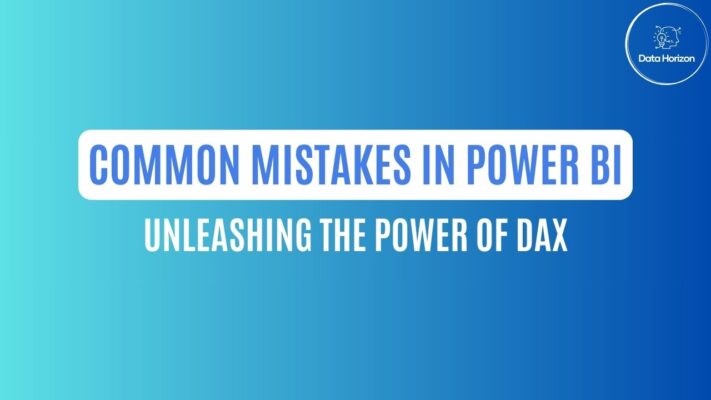In the previous segments, we’ve covered essential aspects of Power BI, including data cleansing, report optimization, and establishing data relationships. Now, let’s turn our attention to another frequent oversight: overlooking the power of Data Analysis Expressions (DAX) for calculations and measures. We’ll explain why neglecting DAX is a mistake and offer insights into how beginners and intermediate users can harness DAX effectively to supercharge their reporting capabilities.
The Pitfall: Neglecting DAX for Calculations and Measures
DAX is a formula language in Power BI that can transform your reports from static visualizations to dynamic, data-driven insights. However, many users, especially beginners, tend to shy away from DAX, sticking to basic calculations and visualizations. This limits the full potential of their reports, as DAX can help create complex calculations, key performance indicators (KPIs), and advanced measures that reveal deeper insights.
Tips for Harnessing DAX Effectively
- Learn the Basics: Start with the fundamentals of DAX. Understand DAX functions, operators, and syntax. Microsoft offers excellent resources and documentation to aid your learning.
- Practice, Practice, Practice: The best way to master DAX is through hands-on practice. Create simple DAX calculations and gradually move on to more complex scenarios.
- Use Measures: Measures are dynamic calculations that adapt to user interactions. Utilize measures for KPIs, ratios, percentages, and other dynamic metrics in your reports.
- Aggregate Functions: DAX provides powerful aggregation functions like SUMX, AVERAGEX, and COUNTX. Explore these functions for custom aggregations in your data.
- Time Intelligence: DAX offers robust time intelligence functions. Use them for year-to-date, moving averages, and other time-based calculations.
- Row-Level Calculations: DAX can work at both the aggregate and row levels. Leverage this flexibility to create custom calculations for specific data points.
- Iterators and Filter Context: Understand the concepts of filter context and row context in DAX, as these play a crucial role in calculations.
- DAX Studio: Consider using DAX Studio, a powerful tool for profiling and optimizing DAX queries. It can help you identify bottlenecks in your calculations.
- Community Support: Join Power BI communities and forums where you can ask questions, share knowledge, and learn from experienced DAX users.
Neglecting DAX in Power BI is a missed opportunity to unlock the full potential of your reports. By learning the basics, practicing, and gradually incorporating DAX into your report-building process, you can create more advanced, insightful, and dynamic reports that resonate with your audience.
In the next segment, we’ll explore the critical aspect of security and data governance in Power BI, discussing the risks of not securing sensitive data properly and sharing best practices for data privacy and compliance. Stay tuned for these essential insights.
